The week at a glance
- Bufflehead in Dorset
- Pacific Diver in County Galway and County Clare
- Pied-billed Grebes in County Limerick and County Clare
- Pallid Harrier reappears in Cornwall
- Wintering Black Kite still in Powys
That's more like it! Not only was Britain and Ireland bathed in glorious late-winter sunshine and a sumptuous big blue sky (OK, the breeze remained chilly but it was great to get some natural Vitamin D into the system), but there was also a tidy rarity or two to play with.
The main weekend kerfuffle came courtesy of a drake Bufflehead on the south coast, finding the sizeable open waters of The Fleet (Dorset) very much to its liking on 6th–10th. Initially seen off West Bexington during the morning of the 6th, it soon went to ground and, despite a few local souls searching the area for much of the day, it wasn't until late afternoon that the bird was relocated at nearby Abbotsbury. There wasn't much time for anyone from further afield to get there, so all interested parties had to wait until the following morning to see what the new day brought. Initially it brought nothing, but searches soon produced "the boy", all dapper and dandy on the Dorset waters near Langton Herring. This delightful duck is nowhere near the outrageous rarity it was 15 years ago; the most recent record was of a female in Highland and then the Outer Hebrides in early June 2007 (with one in 2006, two or three in 2004 and one in 2002 while, towards the end of the 1990s, a drake spent nearly four months in west Devon). How many of the weekend's Dorset day-trippers went for the Dandy Duck Double, taking in Bufflehead and Hooded Merganser, remains a mystery but the former always get a much easier ride than the latter where the BBRC is concerned. Summering Buffleheads, yeah they're fine (but, in fairness, they are the more likely vagrant).
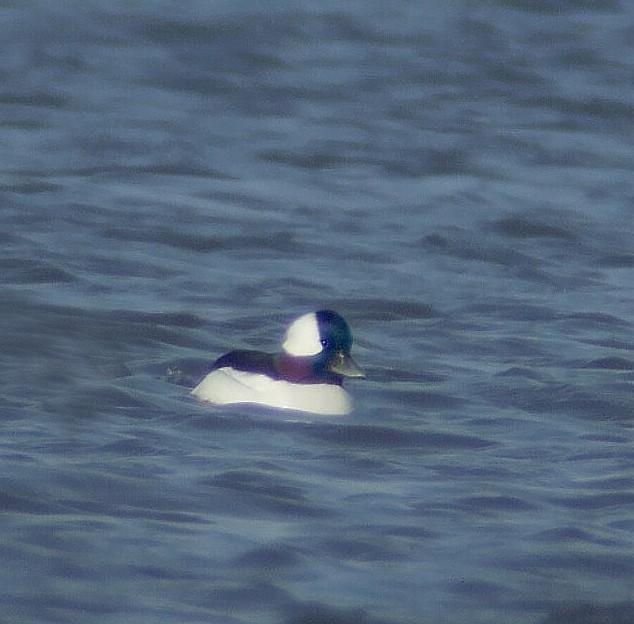
Bufflehead, Langton Herring, Dorset (Photo: Karen Woolley)
Until the Bufflehead reared his rather pretty head, all eyes were still on the Republic of Ireland (again) where many resident birders finally got their chance to pop Pacific Diver onto their national list, courtesy of the adult in and around the vast Galway Bay. The bird was finally pinned down this week, from 6th–8th, between Finvarra and Ballyvaughan (Co. Clare). Earlier in the week, on 4th, the same bird was seen off Doorus Pier (Co. Galway) and this, in turn, surely has to be the adult that was seen (and photographed) off Oranmore (again in Galway) at the end of January. Quite what's happening with the bird seen in Galway Bay in January 2009 is unknown, but this Irish find will become, unequivocally, a first.

Pacific Diver, Finvarra Point, Clare (Photo: Dermot Breen)
As if this wasn't enough, the excitement of last week's Pied-billed Grebe at Lough Gur (Co. Limerick) was added to by a second bird, up in County Clare. It's that whole Bus Éireann syndrome: you wait an age for one and then a second comes along straight after it! The newbie was discovered on Lough Atedaun on 6th, when the Limerick bird was also still present. The Clare individual will become the second county record, following one near Kilbaha in December 1997. These two birds have seen Ireland's total edge closer to double figures: there are nine on the books now.

Pied-billed Grebe, Lough Gur, Limerick (Photo: Ronan McLaughlin)
It seems as though the female Black-throated Thrush at Newholm near Whitby (North Yorkshire) may have departed the scene this week: the last confirmed report was on 3rd and searches this week failed to come up with the goods. As that winter star departed, another reappeared: the juvenile Pallid Harrier was seen again in west Cornwall, at Zennor, on 9th (having been last seen towards the end of January). Another raptor still to check out from the wintering departure lounge was the ultra-showy juvenile Black Kite in Wales, the delights of Gigrin Farm (Powys) still very much to its liking to 7th at least.
Before moving away from the rarest birds of the week, mention has to be made of the Fan-tailed Warbler reported at Kilcoole (Co. Wicklow) on 7th. Photos posted to an Irish website showed not the "suggested" Sedge Warbler but what could have been Ireland's third record of Fan-tailed Warbler — the others were both on Cape Clear Island, in April 1985 and April 1962. Curiously, a photo in the same batch of shots showed a Cetti's Warbler on the same wire as the Cisticola — another Irish mega. What's all that about? Well, the person responsible seems to have gone to ground for now. An exceptional day, an uploading mishap or a curious hoax? The birding Gardaí are hot on the trail!
Out at sea, five Little Auks were seen from a boat some 20 miles off the coast of Northumberland on 7th and were the only seabirds of note.
The Irish Glossy Ibis remained at Tacumshin (Co. Wexford) for another week, still present on 6th. The trio in Somerset were at Shapwick Heath (Somerset) on 5th–7th, along with the Great White Egret (which toured several sites on the Levels during the week). A new bird was seen flying through the Brede Valley (East Sussex) on 7th, while, elsewhere, singles remained in Cambridgeshire, Northamptonshire, Lancashire and Glamorgan.
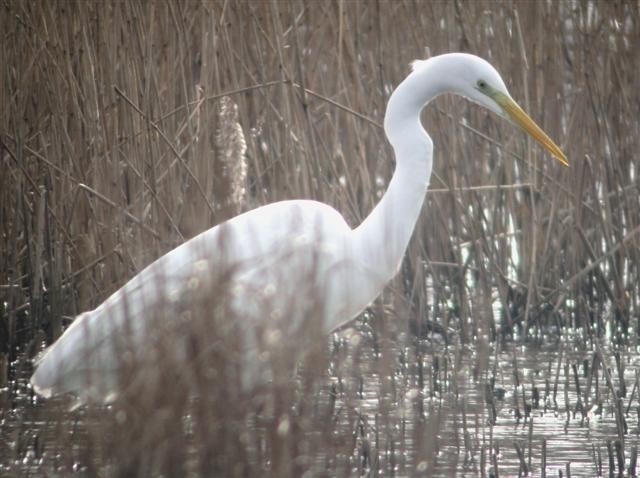
Great White Egret, Leighton Moss RSPB, Lancashire (Photo: Mark Fanshawe)
Two Cattle Egrets were brief visitors to the Hayle Estuary (Cornwall) on 6th, and earlier in the week, on 4th, another Cornish bird was seen on the Fowey Estuary. Singles remained at Sharpham Park (Somerset) and Cuskinny Marsh (Co. Cork) to 7th. Half a dozen Spoonbills remained at Isley Marsh (Devon) to 4th, four were at Middlebere (Dorset) on 8th and a couple more were around Weymouth (Dorset) on 6th–7th. Singles were noted elsewhere in Devon and Dorset, and also in Cornwall, Cheshire and County Cork.

Cattle Egret, Hayle Estuary, Cornwall (Photo: Brian Mellow)
A single Common Crane remained near Steart (Somerset) to 4th and one was at Maxey GPs in Cambridgeshire on the same date, appearing over nearby Peterborough the following day. What may even have been the same bird was then seen at Alvecote Pools (Warwickshire) later the same day. Along the Welsh border, a Crane was seen at Whixall Moss and Fenn's Moss on 6th–7th. In Ireland, one remained at Kilcoman NR (Co. Cork) to 10th.
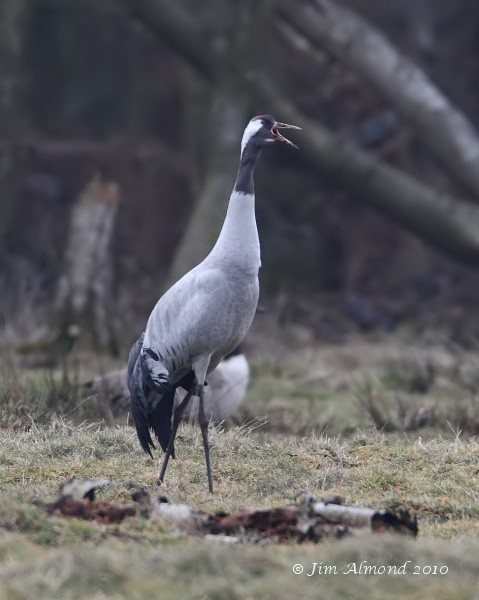
Common Crane, Whixall Moss, Shropshire (Photo: Jim Almond)
A blue Snow Goose was at Loch of Strathbeg (Aberdeenshire) on 9th, with a white bird the same day at Stromness (Orkney). The single white Snow Goose was still on the north Norfolk coast to 4th (seen again at Burnham Norton, with one reported later at Snettisham), while other "regular" lone birds were still in Argyll and Forth. The Lancashire quartet were still at Leighton Moss to 8th at least.
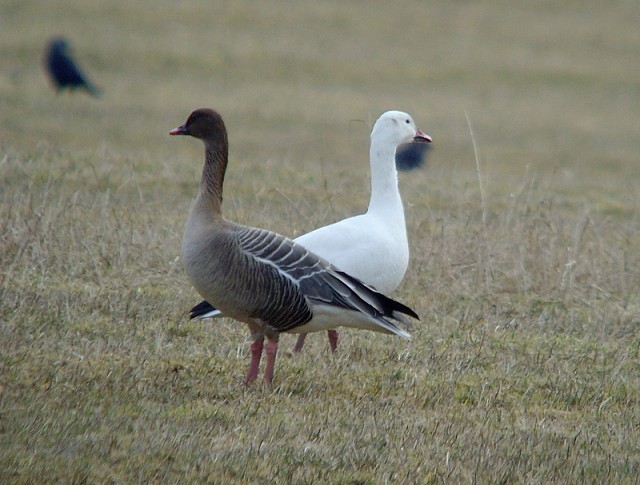
Snow Goose, Haugh of Blackgrange, Forth (Photo: John Nadin)
In Sligo, two Richardson's Canada Goose were again together at Ballintemple, along with their bigger buddy (now thought to be an Atlantic Canada Goose B. c. canadensis — so not a large Todd's then?). A Lesser Canada Goose was still with Whooper Swans at Aghagallon in County Antrim on 7th. In Scotland, a Canada Goose sp. was seen at Loch of Strathbeg on 10th.

Lesser Canada Goose, Aghagallon, Antrim (Photo: Derek Charles)
Two Red-breasted Geese were still on Jersey, and still with Dark-bellied Brent Geese, to 5th, while the provenance of one in Essex in the company of feral Canada Geese was more open to question. Up to 10 Black Brants were seen during the week, with four still in Norfolk, two together in East Yorkshire and singles still in Dorset, Hampshire, Kent and Waterford. In County Cork, at Aghada, a Black Brant was reported as still present to 10th, along with the possible Gray-bellied Brant.
The drake Black Duck was still on Sruhill Lough, Achill Island (Co. Mayo) on 8th, while the bird in Cornwall was reported again at Colliford Lake on 6th. The drake Lesser Scaup remained at the same site to 8th at least. Further drakes remained in Glamorgan and Clyde, and another appeared at Chew Valley Lake (Somerset) on 7th–8th. Back in Glamorgan, the first-winter female Lesser Scaup was still at Eglwys Nunydd Reservoir to 9th, and one also remained on Guernsey.
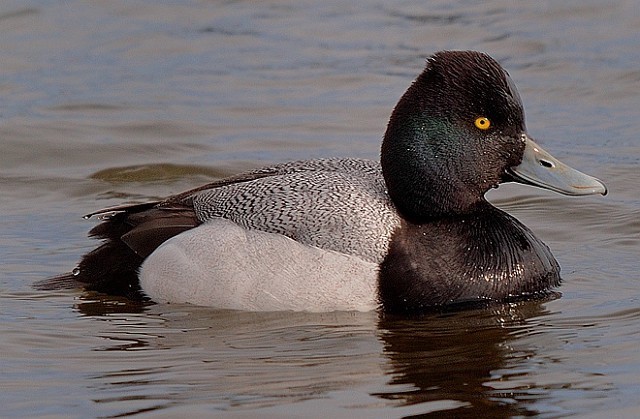
Lesser Scaup, Hogganfield Loch, Clyde (Photo: Mike Thrower)
The drake Ring-necked Duck in West Yorkshire moved to Anglers CP on 5th and another drake appeared at Lough Bo (Co. Sligo) on 9th, but they were the only vague differences from last week. Single drakes remained at Roadford Reservoir (Devon), Foxcote Reservoir (Buckinghamshire), Cowpen Bewley (Cleveland), Loch Evelix (Highland) and Inch Island Lake (Co. Donegal), while females were still to be seen at Frampton-on-Severn (Gloucestershire), Bosherton Lily Ponds (Pembrokeshire), Llyn Pencarreg (Carmarthenshire), North Ronaldsay (Orkney) and, keeping the Pied-billed Grebe company, at Lough Gur (Co. Limerick). A Ferruginous Duck was on Lurgan Park Lake (Co. Armagh) on 8th.

Ring-necked Duck, Cowpen Bewley, Cleveland (Photo: Steve Percival)
In Dumfries & Galloway, the drake American Wigeon was still at Caerlaverock until 10th and a second drake appeared at Martin Mere (Lancashire) during the week. The only Green-winged Teal included new birds on the Blackwater River (Co. Waterford) and Shannon Airport Lagoons (Co. Clare), with another reported at Catcott Lows (Somerset), while regulars remained at Tacumshin (Co. Wexford), Bell Harbour (Co. Clare) and Slimbridge (Gloucestershire).
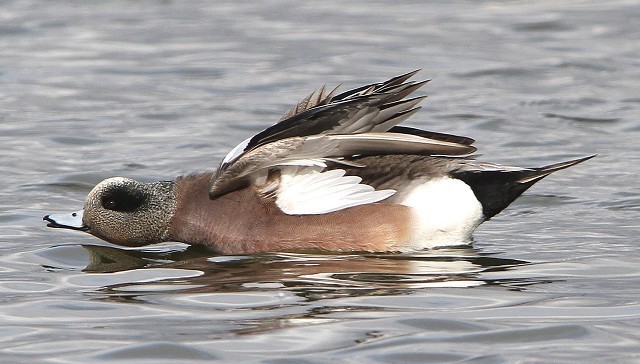
American Wigeon, Caerlaverock WWT, Dumfries & Galloway (Photo: Brian Henderson)
Three drake Surf Scoters were again off the coast of Conwy in North Wales on 7th–9th, and further single drakes were still off Ruddon's Point (Fife) and the Sound of Taransay (Outer Hebrides) on the same date. On 8th, another drake was seen off the Welsh coast, this one off Pendine (Carmarthenshire), and in Devon the female Surf Scoter was around Dawlish Warren to 9th at least. In Scotland, the second-winter drake King Eider remained off Burghead until 8th at least. Along with the Dorset drake, the female or first-winter drake Hooded Merganser remained at Saltholme Pools (Cleveland) to 10th.
A white Gyrfalcon flew across the Tresco channel (Scilly) on 5th, while a couple of Rough-legged Buzzards remained around the Thorpe and Chedgrave marshes (Norfolk) throughout the week. Another Norfolk bird was reported near Hoveton Hall on 4th and on 9th, and one was seen near Grantham (Lincolnshire). A Snowy Owl was on Lihou off Guernsey on 4th (one spent several months there in 2009).

Rough-legged Buzzard, Thorpe Marshes, Norfolk (Photo: Adam Hartley)
The only shorebirds of note this week were a couple of single Long-billed Dowitchers. The first was at Ashton's Callow NR (Co. Tipperary) on 5th — only the third for the county and the first since one (at the same site) in September 1993 — with number two appearing at Bank's Marsh (Lancashire) on 7th–10th.
An adult Bonaparte's Gull was on the River Taff in Cardiff (Glamorgan) on the morning of 7th — a year and a day since an adult was seen in the very same area (so, presumably, the very same bird). When it appeared in March 2009, it spent the best part of three weeks on site; how will it fare in 2010? Well, it was still present to 10th. Another adult, and possibly another returning bird, was seen at Thurso (Highland) on 9th–10th (one was seen here in March 2008).
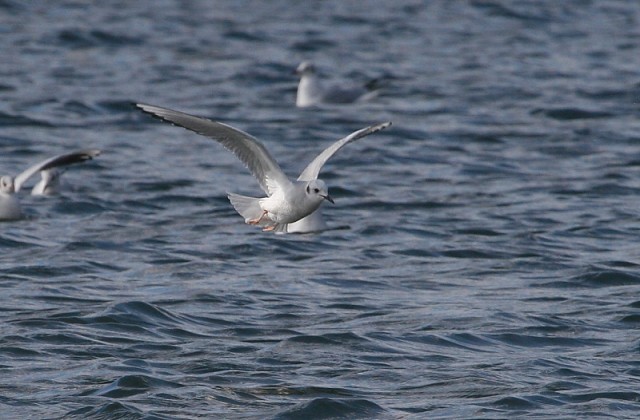
Bonaparte's Gull, Cardiff, Glamorgan (Photo: Luke Phillips)
With the oncoming new season, there's no real surprise that numbers of decent gulls weren't great — just 12 Iceland Gulls and 16 Glaucous Gulls were noted, while Caspian Gulls registered 12 birds, including three first-winters together at Rainham Marshes (London) on 9th.

Glaucous Gull, Sheringham, Norfolk (Photo: Steven Lane)
Ring-billed Gulls were still in evidence though. At least 23 were on offer, some 18 of them in Ireland (across six counties). Once again, County Cork led the way, with a bare minimum six, from Cork City to Cuskinny Marsh, on 7th, and two second-winters were together in Donegal on 9th. Two of the birds on the other side of the Irish Sea were noted in Lancashire on 6th: the adult again at Seaforth and a first-winter found at Southport. In Galway, the adult Forster's Tern was still around Nimmo's Pier and Mutton Island to 7th.

Ring-billed Gull, Antrim, Antrim (Photo: Derek Charles)
A flock of 28 Waxwings over Grantham (Lincolnshire) on 4th was easily the largest group of the week; around 120 were noted countrywide. A Richard's Pipit was at Pulias Headland (Guernsey) on 5th–10th.

Waxwing, Bolton, Greater Manchester (Photo: Jon Taverner)

Richard's Pipit, Pulias Headland, Guernsey (Photo: M Lawlor)
The week's total of Great Grey Shrikes reached at least 12 birds, two of which were seen in the Langdale Forest (North Yorkshire) on 7th. The following day saw another in the same county, at Brearton. Singles remained at Bellever Tor (Devon), in the New Forest (Hampshire), at Welbourn (Lincolnshire), the Welsh Wildlife Centre/Teifi Marshes (Pembrokeshire), Clocaenog Forest (Clwyd), Fenn's Moss and Whixall Moss (Clwyd/Shropshire border), Waddington Fell (Lancashire) and Dalton Crag (Cumbria). In Somerset, one was noted at Wilmersham Common on 7th, within a shortish flight of a recent site, Alderman's Barrow.
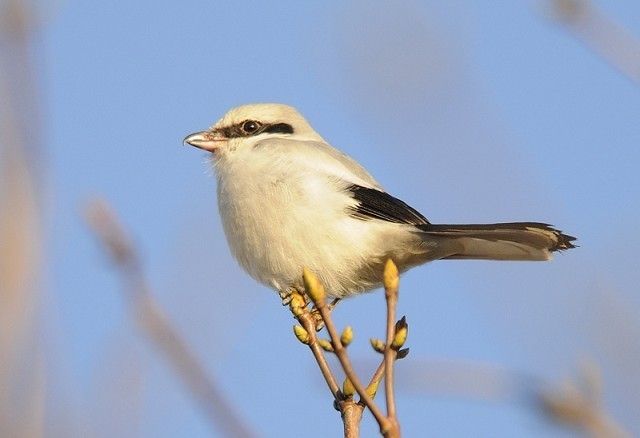
Great Grey Shrike, Wellingore, Lincolnshire (Photo: Nigel Deacon)
The wintering Little Buntings at Dunnet Bay (Highland) and Sconner (Cornwall) were both still present to 7th at least, but the review concludes this week with a remarkable count of Ravens from last week, on the Outer Hebrides. At least 536 birds were seen leaving the dump at Stornoway (Lewis) on the evening of 3rd. An incredible total — so big it has to be a record of some sort (and Stranglers fans would have been in their element...).
Photo of the Week
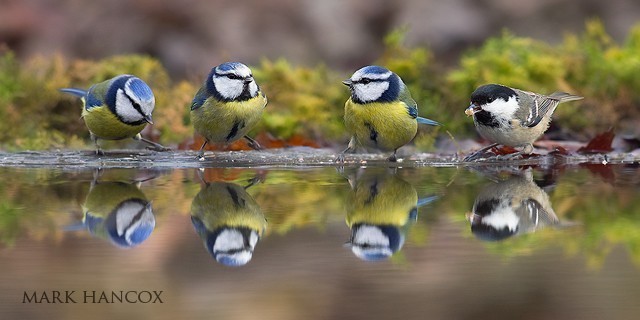
Blue Tit, Hampton, Worcestershire (Photo:
Mark Hancox)
Using a purpose-built reflection pool setup in a Worcestershire wood, Mark Hancox has captured amazing reflection shots of a wide range of species. A sunken hide allowing low-level shooting has made these shots even more appealling for two reasons: first, the low angle increases the clarity and symmetry of the reflections and, second, shooting from the birds' eye level provides a greater sense of intimacy. Despite having such a good setup, though, it takes a great deal of patience to wait for the right image-creating opportunities, and a great deal of skill to turn these into top-quality results. In his latest upload, Mark captured the moment as three Blue Tits and a Coal Tit came down to the water's edge. In addition to the vertical symmetry created by the reflections, the positions and poses of the birds created horizontal symmetry, with all the birds facing into the centre of the frame. A unique moment expertly captured!

Starling, Blackpool, Lancashire (Photo:
David Moreton)

Goosander, Perth, Perth & Kinross (Photo:
John Anderson)

Red Grouse, Bleaklow, Derbyshire (Photo:
Anthony Dixon)

Barn Owl, undisclosed site, Norfolk (Photo:
David Whistlecraft)

Roseate Spoonbill, United States (Photo:
Stuart Hill)
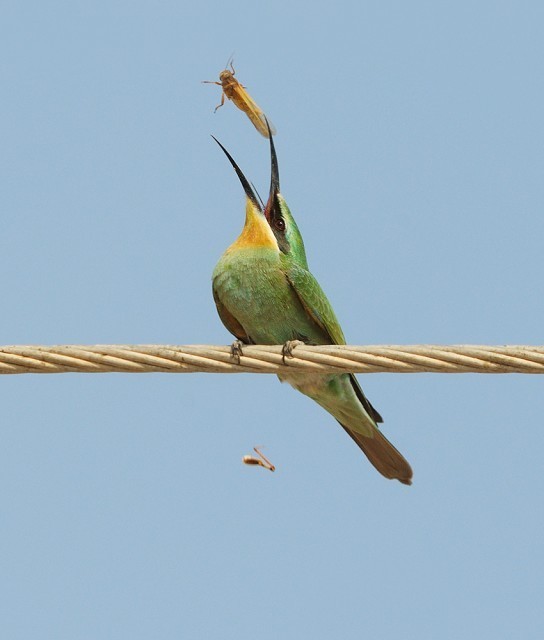
Blue-cheeked Bee-eater, Qatar (Photo:
Dileep Kumar)
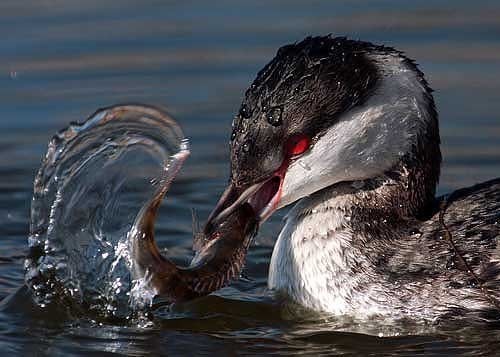
Slavonian Grebe, Grimley, Worcestershire (Photo:
Darren Chapman)
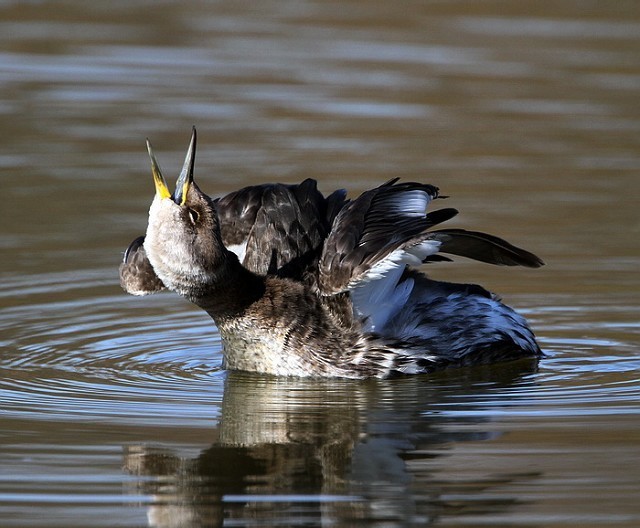
Red-necked Grebe, Langold CP, Nottinghamshire (Photo:
Dean Eades)

Common Buzzard, Loch of Skene, Aberdeenshire (Photo:
Alan Sinclair)

Skylark, North Wirral, Cheshire (Photo:
Richard Steel)

Common Kingfisher, Lymington, Hampshire (Photo:
Lyndon Parkinson)

Firecrest, undisclosed site, Kent (Photo:
Tonyf)

Sparrowhawk, Llandrindod Wells, Powys (Photo:
Kev Joynes)

Oystercatcher, Kingussie, Highland (Photo:
Chris Upson)
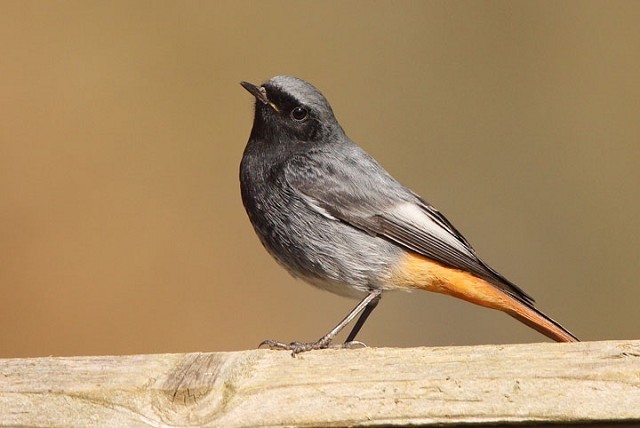
Black Redstart, Exton, Leicestershire and Rutland (Photo:
John Dickenson)

Bar-tailed Godwit, Point of Ayr, Clwyd (Photo:
Steve Round)

Whooper Swan, Martin Mere WWT, Lancashire (Photo:
Robert Askew)

Magpie, Runcorn, Cheshire (Photo:
Terry Gunby)

